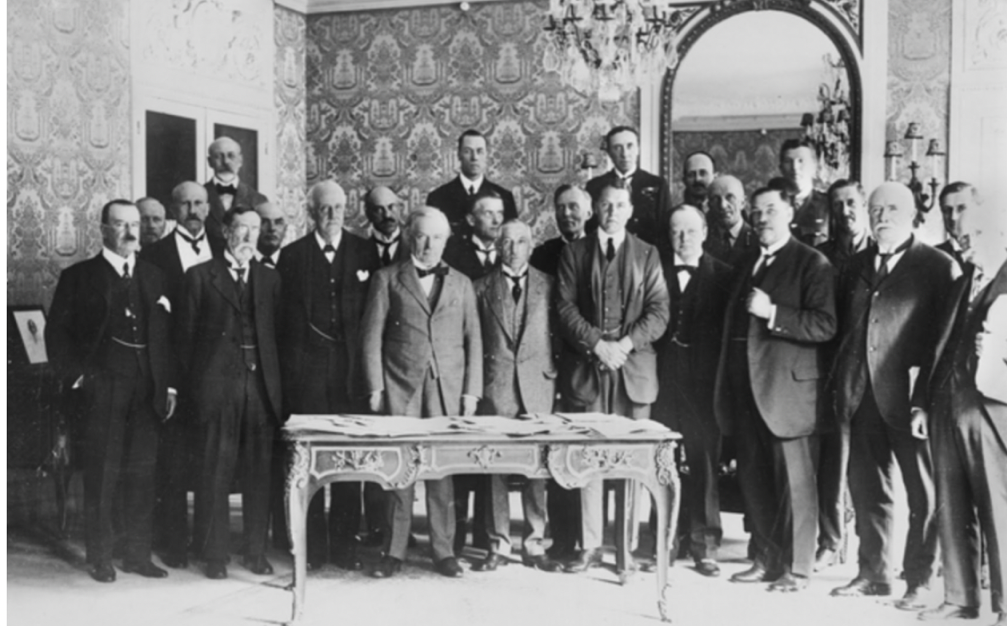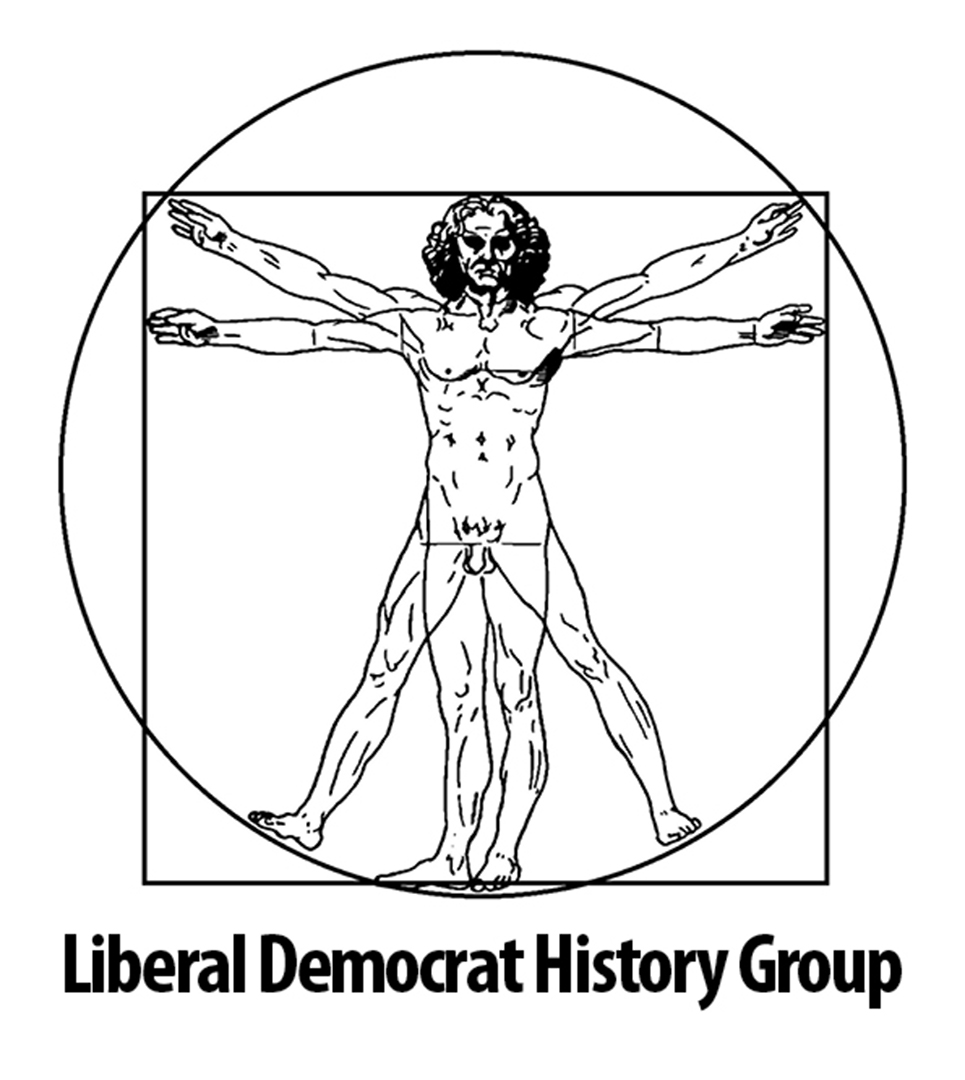Only in rural Wales, Devon and Cornwall, the West Country, the East Riding of Yorkshire, parts of rural Scotland and some of the Lancashire/Yorkshire textile seats did the party’s share of the vote exceed 20%. The party contested only one quarter of the seats, in some areas giving the National Government candidates a clear run; in others the local organisation had simply ceased to exist. It was less than 30 years since the party’s landslide win in the 1906 Election.
However, even more significant than the electoral collapse was the loss in belief that the party had an electoral or ideological future independent of the National Government. The party’s new leader, Archibald Sinclair, former Secretary of State for Scotland in the National Government and MP for Caithness and Sutherland, himself doubted this as did Lord Lothian, another former Liberal Minister in the National Government. The aftermath of the 1935 election was arguably the lowest point for the Liberals in the Twentieth Century, lower than after either the 1950 or 1970 elections.
The despondency was further increased by the three-way split in Liberal representation. As well as Samuel’s supporters, there was a similarly-sized group of Liberals following Sir John Simon who had remained within the National Government despite its formal adoption of tariffs at the 1932 Ottawa Conference. Further, David Lloyd George, who never joined the National Government, remained detached with his party of four MPs consisting of himself, his son, daughter and son-in-law, all members for Welsh constituencies.
Liberal survival after 1935 flowed primarily from the sense of moral outrage that followed the National Government’s decision to allow Mussolini to conquer Ethiopia. This destroyed the government’s liberal facade and enabled Sinclair to begin rebuilding the party’s credibility while working with other sympathetic groups. The Lloyd George Liberals rejoined the main party and Sinclair set up the Meston Commission in 1936 to overhaul the party organisation. However, electoral success was very limited. The party failed to defeat the Liberal Nationals at a crucial by-election in June 1937 at St Ives, Cornwall, despite fielding Isaac Foot, and did no better in the other contests before the Second World War. Although Sinclair, aided by Harcourt Johnstone who ran the Liberal organisation, had put the party on a sounder central footing and raised its parliamentary profile, the decline in the constituencies had continued unabated and there had been little interest in developing new policies to complement free trade. It is therefore likely that at the expected November 1939 General Election the Liberals would have lost more votes and more seats.
Although the Liberals opposed Neville Chamberlain from the outset of the Second World War, they did not play a major role in his downfall in May 1940, although Clement Davies, formerly a Liberal National MP and later Liberal Party leader did. However, the Liberals’ failure to secure a place in the eight strong War Cabinet testified to their lack of influence and credibility in the late 1930s, despite Sinclair’s speeches in Parliament in the run-up to war. Further, although Sinclair was appointed Secretary of State for Air in May 1940 and other Liberals such as Harcourt Johnstone and Dingle Foot entered the government, the Liberals were excluded from many key committees. Sir Percy Harris, the pre-war Chief Whip, led the remaining back-bench Liberals in Parliament.
The success of independents at the ballot box during the wartime electoral truce was misread by many Liberals as marking a political opening for a liberal revival, if only the party’s leadership would have the courage to seize it. Some Liberals resigned from the party to fight by-elections such as Chippenham and Darwen as independents, albeit unsuccessfully. Others formed internal pressure groups such as Radical Action to push the party in a social-liberal direction and to help preserve its independence. Optimism that the Liberals could revive on this basis was strengthened when Violet Bonham Carter, Asquith’s daughter, recruited Sir William Beveridge (his famous report had been published in 1942) to join the party in July 1944. Beveridge was then elected at a by-election under the electoral truce to sit as a Liberal for Berwick-on-Tweed. The wartime disintegration of the Liberal Nationals, due to the identification of their leaders, Sir John Simon and Ernest Brown, with Neville Chamberlain’s policy of appeasement, led to MPs such as Clement Davies and Edgar Granville rejoining the Liberals and brief, though ineffectual, negotiations for reunification in August 1943. These, however, foundered on the continuing unwillingness of the Liberal Nationals to stand for election other than in alliance with the Tories.
The 1945 General Election was called by Churchill after the defeat of Germany and before victory over Japan, primarily because Labour under Attlee were unwilling to remain longer in the Coalition. Despite Sinclair’s old friendship with Churchill (they had been in the trenches together in the First World War) and his wish for the Coalition to continue, politically the Liberals had been clamouring for the party to leave it for some time. Put under considerable pressure from his party, Sinclair agreed not to countenance any electoral pact, even though the war itself had not yet ended. Consequently the Liberals fought the election separately and they were unprepared. In the event 306 candidates were put forwards but of these only 12 were elected. All the Liberals in urban seats including Sir Percy Harris, together with their leader, Sinclair, and Beveridge, were defeated. The remaining MPs represented the periphery of the country with a cluster only in rural Wales, and other than Lloyd George’s children, Megan and Gwilym, were little known.
Despite his Liberal National past, Clement Davies was selected by the other Liberal MPs as leader. This was largely because none of the other MPs wanted it or else had been elected for the first time in 1945. In any event, Sinclair’s Tory opponent had promised to resign once Japan had been defeated and therefore the former leader was expected to return quickly to Parliament, however this promise was not kept and Sinclair did not return to Parliament until 1954, when he took a seat in the Lords after illness.
After 1945, the Liberals consisted largely of a gathering of notables to fight elections together. The party was dependent on a few wealthy supporters to keep going. Leadership was difficult with little sense of unity or coherence. Initially, Clement Davies and Tom Horabin, his Chief Whip, saw the party’s role as that of pressurising Labour from the left by expressing the views they had held in opposition to the wartime Coalition. This stance, however, was soon abandoned in favour of a reversion to the 1930s strategy of modernisation, rebuilding the party centrally and locally and eliminating the competition from the Liberal Nationals. Although there were more desultory reunification discussions, the Woolton-Teviot pact in 1948 showed that most parliamentary Liberal Nationals preferred working with the Tories to the uncertainties of a Liberal future. At the same time, Edward Martell and Philip Fothergill tried to broaden the party’s financial sources and revive its constituency organisation. Despite the short lived success of regaining Percy Harris’s seat of Bethnal Green South West in the 1946 London County Council elections, few Parliamentary by-elections were fought in this period and many that were saw disastrous performances. In some areas, too, but particularly in the Lancashire/Yorkshire textile belt, the party at municipal level continued to work in close alliance with the Conservatives.
The 1950 election saw a substantial increase in the number of Liberal candidates to 475 as the party sought to test its credibility as a national force by fighting on as broad a front as possible. In the event only nine MPs were elected, with the percentage of the vote obtained by each Liberal candidate declining from 18.6% in 1945 to 11.8%. Only in South-West England, rural Wales, the Scottish borders and a few scattered agricultural seats did the party poll more than 20%. The Labour Government saw its majority substantially cut and returned to the electorate some 18 months later. With little money and less enthusiasm, the Liberals stood only 109 candidates and had only six MPs elected, only one of those, Jo Grimond, in a three way contest.
Throughout the whole period since 1945, there were background discussions between Liberals and Conservatives with a view to a wider pact to counter the general fear that Labour would become the dominant party due to the size of the working class. The 60/40 split in the Liberal vote in 1951 where the Liberal candidate stood down provided some support for the view that there was a natural anti-socialist majority in the nation if only the two parties could work together. Among the Tories however there was deep distrust of the Liberals, with only Churchill, a former Liberal himself, showing much interest. However, in a few Lancashire/Yorkshire seats and a scattering of other places, for example, Dundee, the habit of municipal arrangements carried through to parliamentary level. In 1950, the parties shared the two Huddersfield seats between them, with Donald Wade, being elected as the victorious Liberal for the West division. In 1951, the same arrangement was adopted in Bolton, and Arthur Holt was elected MP for Bolton West. However these were local exceptions and did not provide a blue print for Liberal survival elsewhere (let alone revival).
After the 1951 election, Churchill offered the post of Education Minister to Clement Davies. Mindful that the party would not accept it and really only with support from Violet Bonham Carter to take the post, Davies turned it down. Such was the measure of Liberal despair at this point, that of their 109 candidates who contested that election, two thirds never stood again.
That however was another low point. The period from 1951 until 1956, when the Suez crisis revealed that the Conservatives were no longer a safe home for Liberals and Grimond replaced Davies as leader, were relatively tranquil for the party, although internally there was much debate about the continuing relevance of free trade to the post-war world that was not settled until the beginning of the 1960s.
The party’s revival had, however, begun slowly following Churchill’s resignation of the Conservative Party leadership. From poll averages of 6% in 1954, the Liberal rating picked up to 7-8% from August 1955 onwards. Electorally, too, the party regained some ground at the end of Clement Davies’ leadership. It performed surprisingly well in the December 1954 Inverness by-election where John Bannerman, Ray Michie’s father, was the candidate, although there was no sustained by-election improvement until after Grimond became leader. The 1955 Election was the first since 1929 at which the party’s number of MPs had not gone down. Strong performances were recorded in North Devon where Jeremy Thorpe stood and in North Cornwall. This was first election since 1929, when any electoral improvement could be identified. The first Focus style leaflets were put out in Rugby in 1953 and the party also slowly began to increase its number of councillors. However, it was only with Grimond’s new style of leadership – committed, interventionist and more attractive to the media – that the Liberal Party revival made much impact on the wider British political system.
After reading history at Selwyn College, Cambridge and studying for a MA at Lancaster University, Malcolm Baines completed a D Phil at Exeter College, Oxford, on “The Survival of the British Liberal Party, 1932-1959” in 1989. This article was written in October 2003.

Journal of Liberal History
For the discussion and research of Liberal, Liberal Democrat and SDP history
Developed and hosted by Prater Raines
